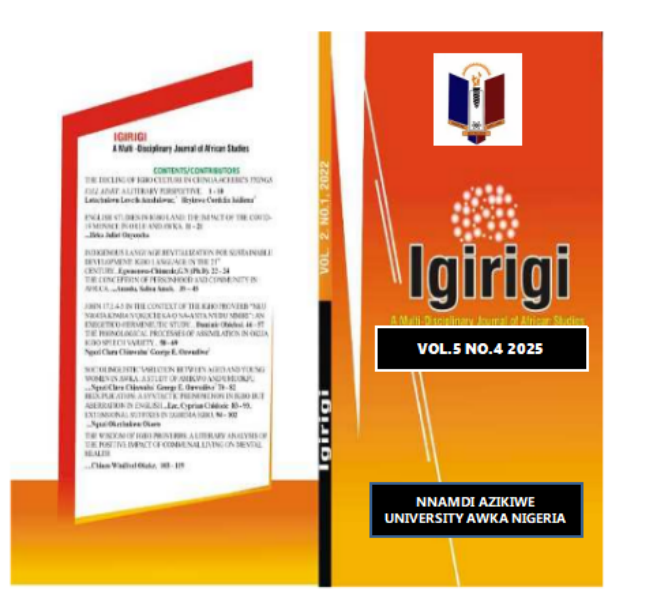USE OF SEMANTIC MAPPING AND CONTEXT CLUES IN INSTRUCTION AS EFFECTIVE STRATEGIES FOR READING COMPREHENSION AMONG SENIOR SECONDARY SCHOOL STUDENTS IN JOS SOUTH LGA PLATEAU STATE, NIGERIA
Keywords:
Instruction, semantic mapping, Context Clues, Strategies, Reading Comprehension IntroductionAbstract
In Nigeria, English is an essential language for any pedagogical engagement. Reading comprehension is a vital aspect of the examination conducted by West African Examination Council (WAEC) and National Examination Council (NECO) for final year students of secondary schools in Nigeria. Therefore, the study aims to investigate how senior secondary school (SS2) students’ reading comprehension performance will improve through instruction in semantic mapping and context clues. Semantic mapping is where meaning is derived from the surrounding environment of a word as they seek for association or relationship with other words and Context clues are the words, phrases, and sentences that surround an unfamiliar word that can help and explain or give clues to its meaning. A sample of 160 (one hundred and sixty) students were drawn from two schools in Jos South Local Government Area of Plateau State, Nigeria. The two groups were drawn from the same population of 1,878, one of which was the experimental group and the other, the control group. While the experimental group was exposed to the treatment, the control group was not. The quasi- experimental research design was adopted in this study since scheduling and implementation of experimental treatment conditions or randomization and grouping of subjects was not possible. The data for the study were collected using the Adapted Structured Test (AST) which was based on a reading prose passage adopted from the New Oxford Secondary English Course for SSS2. New Edition (NOSEC). The reading passage was used for both the pre-test and the post-test. The achievement of the students was based on their ability to use semantic maps and context clues to replace given words or phrases with other words or phrases which mean the same as used in the comprehension passage. The findings showed a better performance of students’ achievement in the post-test than that of the pre-test. It also revealed that the students’ performance in reading comprehension after instruction in semantic mapping and context clues is improved. Following the findings, it is recommended that teachers of English Language devote part of their instructional time to teach ways students can identify and use semantic maps and context clues during reading sessions.Downloads
Published
2025-09-30
Issue
Section
Articles

